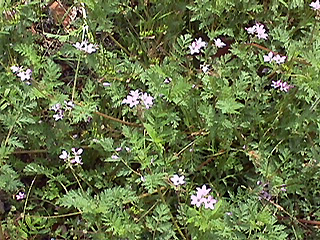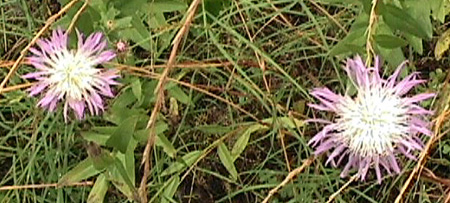
Grape Hyacinth
(Muscari botryoides)
(March to April)
This flower appeared in my yard in 2001 at the intersection of my driveway and the street in a small group standing alone. It reappeared in 2002 in exactly the same place and in the same number. It is an escaped domestic flower called "grape" because its tiny, bell-like dark blue blossoms are tightly clustered like grapes. It is discussed in A Field Guide to Texas Wildflowers by Campbell and Loughmiller, who found and photographed it in East Texas. I have however seen it growing wild in larger numbers in other yards in Denton.


